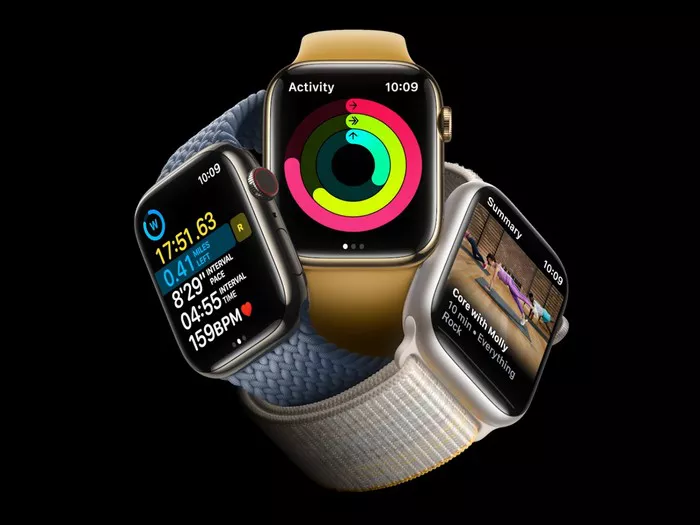In the seamless integration of Apple’s ecosystem, the Apple Watch has become an indispensable companion to the iPhone. As users revel in the convenience of receiving notifications on their wrists and tracking health metrics effortlessly, a common question arises: Does the Apple Watch drain iPhone battery? In this comprehensive exploration, we delve into the intricacies of the relationship between Apple Watch and iPhone battery life, dissecting the factors at play and offering insights into optimizing the coexistence of these two essential devices.
The Symbiotic Relationship: Apple Watch and iPhone:
Interconnected Bliss:
The Apple Watch and iPhone form a symbiotic relationship, where the watch extends the functionality of the iPhone to the wrist.
Seamless synchronization allows users to receive notifications, make calls, and track activities without reaching for their iPhones.
Bluetooth Connection:
The key to this connection is Bluetooth technology, which enables constant communication between the Apple Watch and iPhone.
The continuous exchange of data, notifications, and updates relies on the Bluetooth connection maintained between the two devices.
Understanding the Dynamics of Power Consumption:
Bluetooth and Battery Consumption:
Bluetooth connectivity is a known consumer of battery power, as it facilitates the exchange of data between devices.
The Apple Watch’s constant connection with the iPhone can impact the battery life of both devices, with the iPhone being more susceptible to drainage.
Efficiency of Bluetooth Low Energy (BLE):
Apple utilizes Bluetooth Low Energy (BLE) technology to minimize power consumption during device communication.
While BLE is more energy-efficient than traditional Bluetooth, the continuous nature of the connection can still contribute to power usage.
Notifications and Data Exchange:
The frequency and type of notifications exchanged between the Apple Watch and iPhone influence the power impact.
Regular notifications, app updates, and data synchronization can collectively contribute to battery drain.
Background Processes:
The iPhone engages in background processes to maintain the connection with the Apple Watch, even when not actively in use.
These background processes, coupled with notifications, can contribute to battery consumption on the iPhone.
Myth vs. Reality: Debunking Common Perceptions:
Apple’s Optimization Efforts:
Apple has implemented optimization strategies to mitigate excessive battery drain caused by the Apple Watch-iPhone connection.
Continuous refinements in software updates aim to strike a balance between functionality and battery efficiency.
Variable Impact on iPhone Models:
The impact of the Apple Watch on iPhone battery life can vary among different iPhone models.
Newer iPhone models equipped with advanced battery technology may experience less noticeable drain than older models.
Strategies for Optimizing Battery Life:
Bluetooth Settings:
Users can optimize Bluetooth settings on both the Apple Watch and iPhone to manage power consumption.
Enabling “Optimized Battery Charging” on the iPhone can enhance long-term battery health.
Customize Notifications:
Managing and customizing notifications on the Apple Watch and iPhone can reduce unnecessary data exchange.
Prioritize essential notifications and disable non-essential alerts to minimize background processes.
Background App Refresh:
Users can manage background app refresh settings on both devices to control data synchronization.
Restricting unnecessary background processes can contribute to improved battery efficiency.
Airplane Mode:
Temporarily enabling Airplane mode on either the Apple Watch or iPhone can halt data exchange and conserve battery life.
This is particularly useful in scenarios where preserving battery life is a priority.
Real-World User Experiences:
Everyday Scenarios:
In typical daily usage, where both devices are actively used, users often report minimal noticeable impact on iPhone battery life.
Regular charging habits and optimized settings contribute to a harmonious coexistence.
Fitness Tracking and GPS Usage:
Intensive activities, such as outdoor workouts with GPS tracking, can have a more noticeable impact on both Apple Watch and iPhone battery life.
Managing GPS usage settings and optimizing fitness tracking features can mitigate the impact.
Conclusion:
In conclusion, the dynamic between the Apple Watch and iPhone battery life is nuanced and influenced by various factors. While the Bluetooth connection and data exchange can contribute to battery drain, Apple’s optimization efforts and user-centric strategies can mitigate these effects. The symbiotic relationship between the two devices is designed to enhance user experience without causing significant disruptions to daily life.
Users can confidently enjoy the convenience and functionality offered by the Apple Watch-iPhone duo by implementing thoughtful optimizations. As technology continues to evolve, Apple’s commitment to refining the power dynamics between its devices ensures that users can seamlessly integrate these innovative technologies into their lives without undue concern for battery life. In the evolving landscape of smart devices, the Apple Watch and iPhone remain pioneers, showcasing the possibilities of a harmonious technological coexistence.

